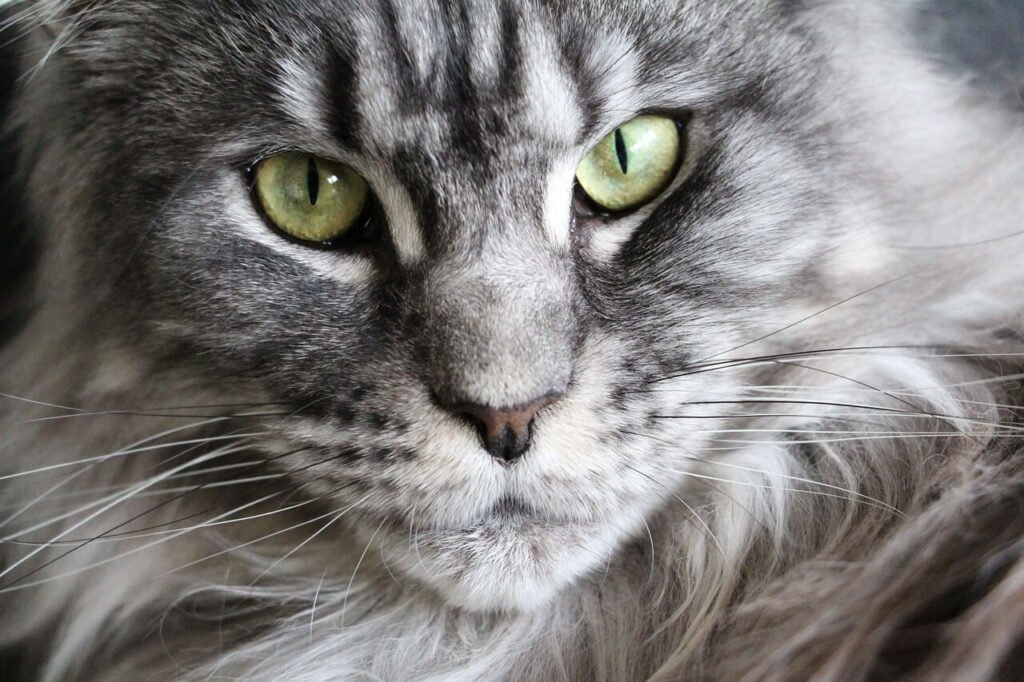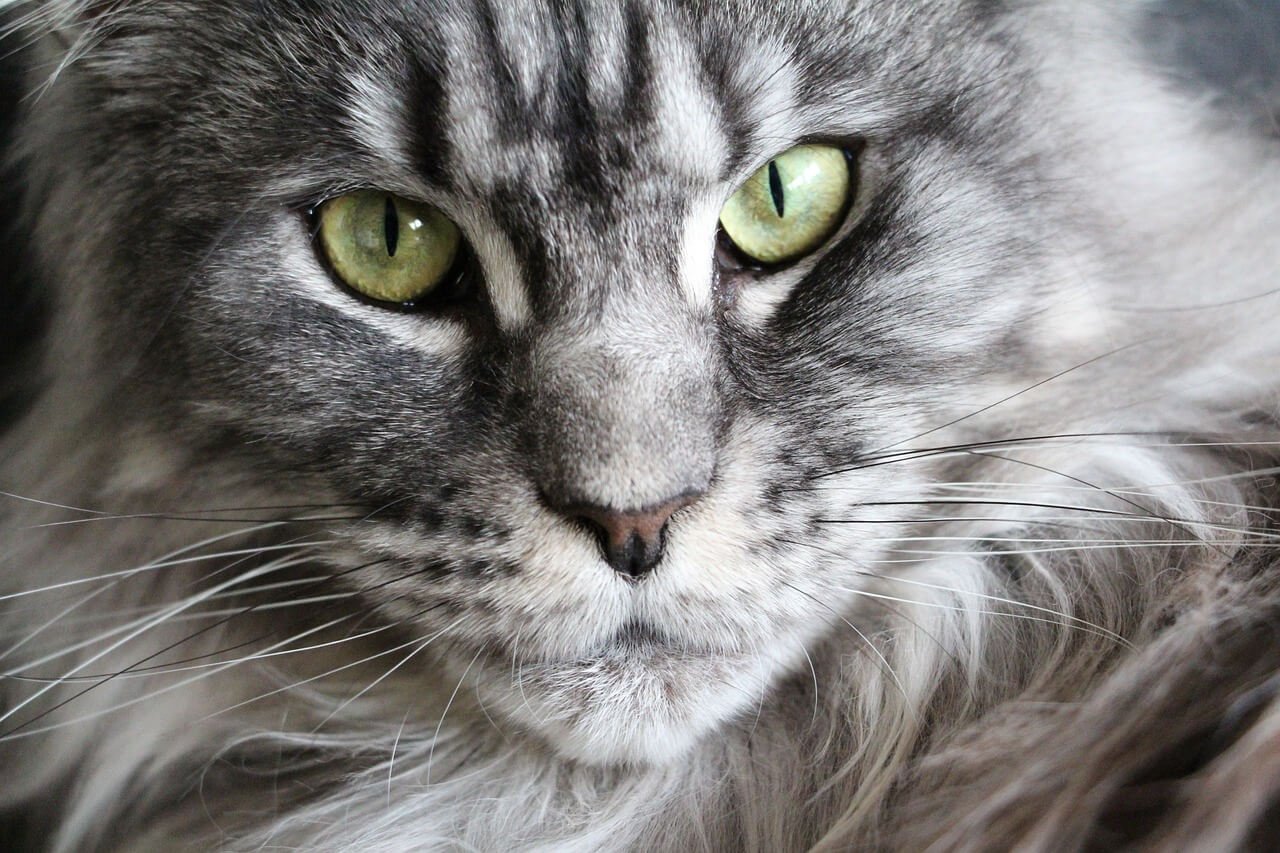Why Does My Cat Have a Black Whisker?
Cats are fascinating creatures, and their whiskers often spark curiosity among pet owners. If you’ve ever noticed a black whisker on your cat—or perhaps multiple—you might wonder what it means. Are black whiskers normal? Do they serve a specific purpose? Whiskers, also known as vibrissae, are more than just cute facial features—they play a vital role in your cat’s sensory perception and overall well-being. In this blog post, we’ll explore the reasons behind black whiskers, their function, and what they reveal about your feline friend’s health and personality.
The Science Behind Cat Whiskers
Understanding the biology of cat whiskers is key to unraveling why some may appear black. These specialized hairs are far more complex than regular fur and serve important functions for your cat.
Whiskers Are Sensory Tools:
Whiskers act as tactile sensors, helping cats detect changes in their environment by sensing vibrations and air currents.Rooted in Nerve-Rich Follicles:
Each whisker is deeply embedded in a follicle packed with nerves and blood vessels, making them highly sensitive to touch.Color Variation Is Natural:
Whisker color can vary based on genetics, coat color, or age. A black whisker on a lighter-colored cat is simply a unique trait.Whiskers Reflect Coat Pigmentation:
Cats with darker coats or mixed-color patterns often have black whiskers that match their fur pigmentation.Not All Whiskers Are Uniform:
It’s common for cats to have whiskers of different colors, lengths, or textures, even on the same face.
This natural diversity highlights the uniqueness of each cat’s appearance while underscoring the importance of whiskers in their daily lives.
Common Reasons for Black Whiskers
If your cat has one or more black whiskers, there’s no need to worry—it’s usually a harmless trait. Here are some common explanations for this phenomenon.
Genetic Factors Play a Role:
Just like eye color or fur patterns, whisker color is determined by your cat’s genetic makeup.Age Can Influence Whisker Color:
As cats grow older, their whiskers may change color, including turning darker or black.Mixed-Breed Cats Often Have Varied Whiskers:
Cats with mixed ancestry are more likely to display diverse whisker colors due to their varied genetic background.Environmental Adaptations May Occur:
While rare, environmental factors such as sunlight exposure could slightly alter whisker pigmentation over time.No Health Concerns Associated with Color Changes:
A black whisker doesn’t indicate illness or discomfort unless accompanied by other symptoms like brittle whiskers or hair loss.
These insights reassure cat owners that black whiskers are typically nothing more than a quirky characteristic of their beloved pets.
Check this guide 👉Are You Supposed to Trim Cat Whiskers? Best 7 Tips!
Check this guide 👉Why Did My Cats Whisker Fall Out? Best 7 Health Tips!
Check this guide 👉Cat Whiskers Position Meaning: Best 7 Expert Tips!

Facts About Cat Whiskers | Signs of Healthy Whiskers |
|---|---|
Whiskers help cats navigate tight spaces | Whiskers should feel firm and flexible |
They are highly sensitive to touch | No excessive shedding or breakage |
Whisker color varies by genetics | Consistent texture and appearance |
Whiskers aid in detecting prey | No discoloration beyond natural variation |
Cats have whiskers on their face and legs | No signs of irritation around whisker pads |
How to Care for Your Cat’s Whiskers
While whiskers don’t require direct maintenance, understanding how to care for them ensures your cat stays comfortable and healthy.
Avoid Cutting or Trimming Whiskers:
Never trim your cat’s whiskers, as this can disorient them and impair their ability to sense their surroundings.Provide a Whisker-Friendly Environment:
Use wide, shallow bowls for food and water to prevent “whisker fatigue,” which occurs when whiskers rub against narrow surfaces.Monitor for Unusual Changes:
Keep an eye out for broken, bent, or excessively falling whiskers, which could signal stress or nutritional deficiencies.Groom Gently Around Whisker Areas:
When brushing your cat, be cautious near their face to avoid irritating sensitive whisker follicles.Consult Your Vet if Concerned:
If you notice sudden changes in whisker condition, consult a veterinarian to rule out underlying health issues.
Proper care ensures your cat’s whiskers remain functional and free from damage.
Myths About Black Whiskers Debunked
Despite their charm, black whiskers sometimes fall victim to misconceptions. Let’s clear up some common myths surrounding this intriguing feature.
Myth: Black Whiskers Indicate Bad Luck:
This superstition has no basis in reality—black whiskers are purely a matter of genetics.Myth: Only Certain Breeds Have Black Whiskers:
Any breed or mix can have black whiskers, regardless of their coat color or pattern.Myth: Black Whiskers Mean a Cat Is Older:
While aging can affect whisker color, black whiskers aren’t exclusive to senior cats.Myth: Black Whiskers Are Less Sensitive:
All whiskers, regardless of color, share the same sensitivity and functionality.Myth: Changing Whisker Colors Signal Illness:
Minor color changes are usually harmless unless paired with additional symptoms.
Dispelling these myths helps foster a better understanding of our feline companions’ unique traits.
Fun Facts About Cat Whiskers
Cats’ whiskers are full of surprises, offering insight into their behavior and biology. Here are some fun facts that highlight their uniqueness.
Whiskers Are Longer Than You Think:
On average, a cat’s whiskers measure about 2-3 times the width of their body, helping them gauge whether they can fit through tight spaces.They Change Position Based on Mood:
Forward-facing whiskers indicate curiosity, while flattened whiskers suggest fear or aggression.Whiskers Help Detect Prey Movement:
Even in complete darkness, whiskers allow cats to track the slightest movements of potential prey.Whiskers Aren’t Limited to the Face:
Cats also have whiskers above their eyes, on their chin, and near their front legs for added sensory input.Whisker Patterns Are Unique:
Like fingerprints, every cat’s whisker arrangement is distinct, adding to their individual charm.
These fascinating facts remind us just how remarkable cats—and their whiskers—truly are.
How Whiskers Aid in Hunting
A cat’s whiskers aren’t just adorable; they’re critical tools for hunting success. Their role in capturing prey showcases their evolutionary brilliance.
Detecting Air Currents:
Whiskers sense subtle shifts in air movement, alerting cats to nearby prey even before visual confirmation.Measuring Distance Precisely:
Whiskers help cats determine the exact location of their target, ensuring accurate pounces.Navigating Dark Spaces:
In low-light conditions, whiskers compensate for limited visibility, guiding cats toward hidden prey.Assessing Texture and Shape:
Whiskers allow cats to “feel” objects without direct contact, identifying obstacles or hiding spots.Enhancing Stealth and Precision:
By minimizing noise and maximizing accuracy, whiskers contribute to a cat’s reputation as a skilled hunter.
This sensory superpower underscores why whiskers are indispensable to feline survival.
Signs Your Cat’s Whiskers Need Attention
While whiskers are generally low-maintenance, certain signs may indicate they need closer attention. Addressing these issues promptly ensures your cat’s comfort.
Excessive Whisker Loss:
Losing multiple whiskers at once could signal stress, poor nutrition, or an underlying health issue.Brittle or Damaged Whiskers:
Dry, split, or frayed whiskers may point to dietary deficiencies or environmental irritants.Irritated Whisker Pads:
Redness, swelling, or discharge around the whisker base requires veterinary evaluation.Changes in Behavior:
If your cat seems disoriented or hesitant to explore, it could stem from compromised whisker function.Unusual Bending or Curving:
Whiskers that suddenly bend or curve unnaturally may indicate trauma or abnormal growth patterns.
Paying attention to these signs helps safeguard your cat’s well-being and preserves their whisker health.
Frequently Asked Questions About Cat Whiskers
Are black whiskers normal?
Yes, black whiskers are completely normal and result from genetics or natural variations.
Can I trim my cat’s whiskers?
No, trimming whiskers can confuse and disorient your cat, so it’s best to leave them alone.
Do whiskers grow back if they fall out?
Yes, whiskers naturally shed and regrow over time, similar to regular fur.
What causes whisker discoloration?
Age, genetics, or minor environmental factors can lead to changes in whisker color.
Should I worry if my cat loses a whisker?
Not necessarily—whiskers occasionally fall out naturally, but excessive shedding warrants a vet visit.
Celebrating the Uniqueness of Cat Whiskers
Whether black, white, or multicolored, your cat’s whiskers are a testament to their individuality and incredible design. Understanding their purpose and care requirements allows you to appreciate these tiny yet mighty features even more. By embracing your cat’s quirks—including those striking black whiskers—you deepen the bond you share and ensure their continued happiness and health. After all, every detail about your feline companion makes them truly one of a kind.
Can a Cat Die from a Cold? Best 7 Expert Tips! Learn how to identify, treat, and prevent feline colds while understanding when to seek veterinary care for your cat’s health.
Cat Screaming for Food: Best 7 Expert Tips! Discover effective strategies to manage your cat's food-related vocalizations and create a peaceful feeding routine.
Aspiration Pneumonia in Cats: Best 7 Expert Tips! Discover causes, symptoms, and treatment advice to protect your cat’s respiratory health and ensure a speedy recovery.
Hip Dysplasia in Cats: Best 7 Expert Tips! Discover expert advice on managing hip dysplasia in cats, from symptoms and prevention to treatment options for a happier, healthier feline life.





